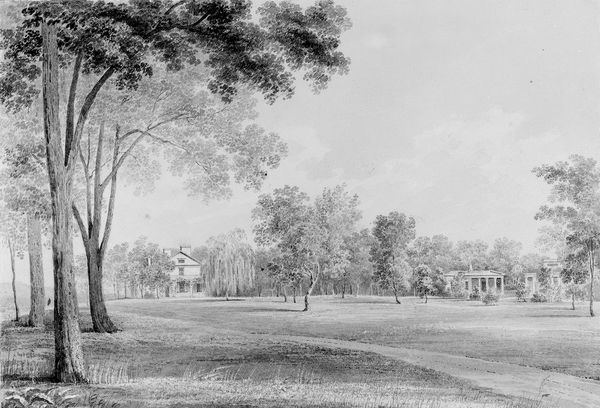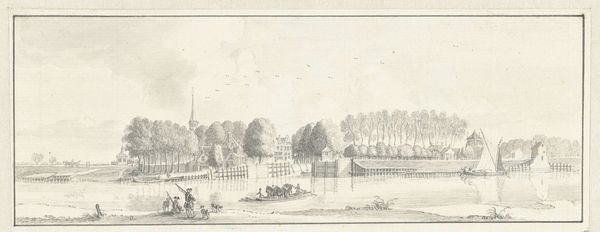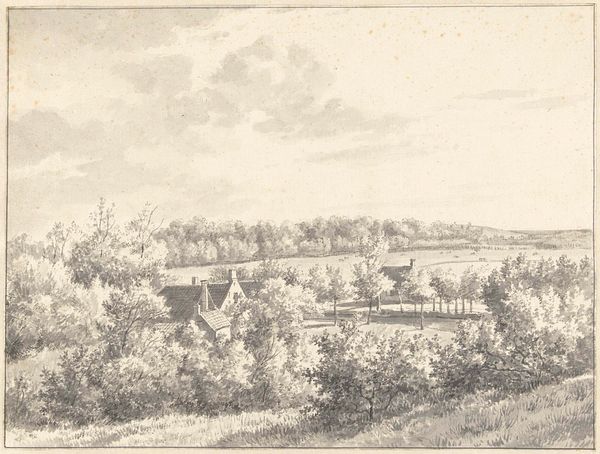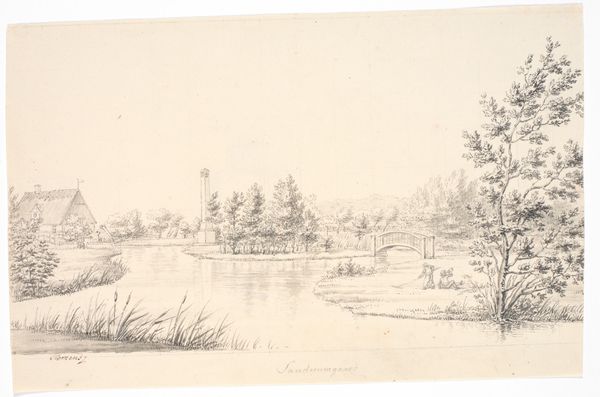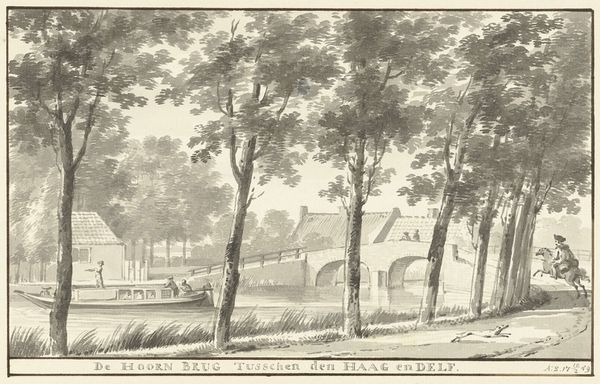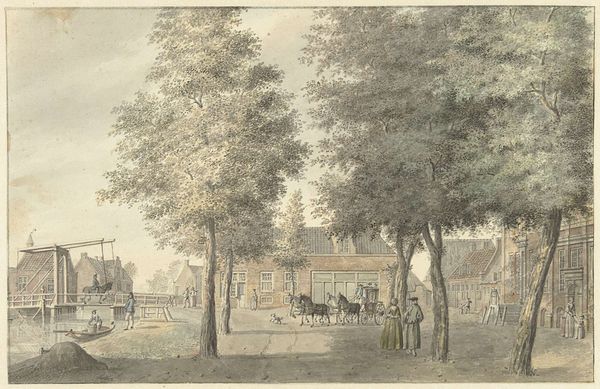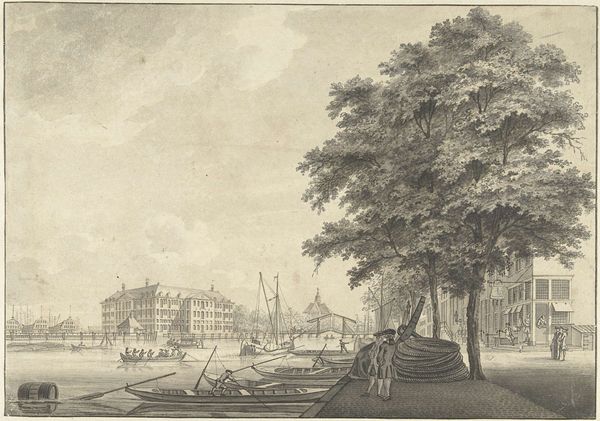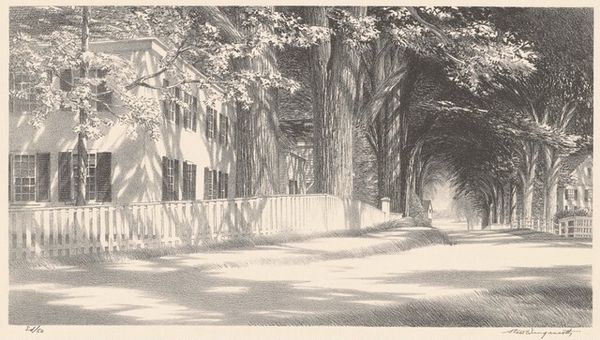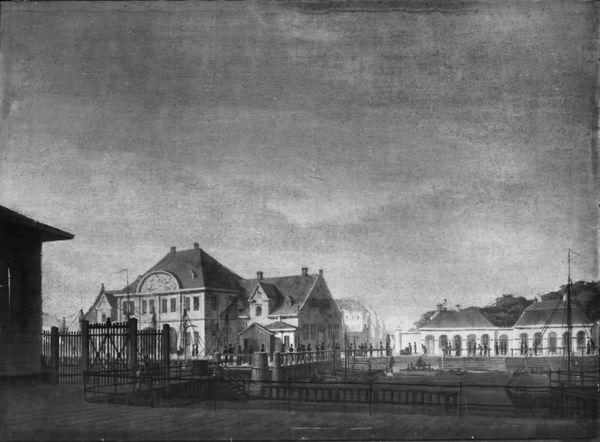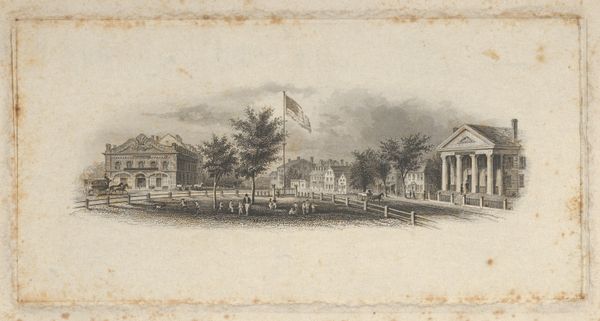
painting, paper, watercolor
#
tree
#
boat
#
architectural landscape
#
ship
#
painting
#
landscape
#
waterfall
#
river
#
perspective
#
paper
#
watercolor
#
forest
#
romanticism
#
water
#
cityscape
#
academic-art
Copyright: Public domain
Editor: So, this watercolor on paper is entitled "View from the Terrace of the Elagin Palace" by Maxim Vorobiev, painted in 1823. It has this really serene and picturesque quality to it, almost dreamlike. How would you interpret a piece like this, considering its historical context? Curator: Considering the time, and knowing this piece is held in the Hermitage Museum in Saint Petersburg, it invites reflection on the role of the aristocracy in shaping landscape imagery. Vorobiev offers us a privileged viewpoint, a leisurely scene almost staged for the viewer’s benefit. What elements within the work do you think contribute to this sense of constructed perspective? Editor: Definitely the terrace itself, acting like a proscenium arch, and maybe the way the trees frame the vista so perfectly. It feels very deliberate. But was it common to romanticize the landscape like this back then? Curator: Absolutely. Early 19th-century Russian art, even when depicting real places, was deeply influenced by Romanticism. Artists weren’t merely recording what they saw, but were often subtly crafting visions of national identity and ideals, usually commissioned and displayed with purpose. Can you imagine how the inclusion of the naval ship serves a dual role, both as picturesque detail and symbol of Russian power? Editor: That makes total sense! It's like Vorobiev is showing us not just a pretty view, but a whole social and political world. I hadn't really thought about the politics of displaying an image like this before. Curator: Exactly. Landscape painting isn’t just about the landscape. It is also about the person allowed to access it and the messages those spaces conveyed. It makes you question what we see, why, and for whom. Editor: Wow, that's given me so much to consider when I look at landscapes now. It's more than just scenery, it's a statement.
Comments
No comments
Be the first to comment and join the conversation on the ultimate creative platform.
